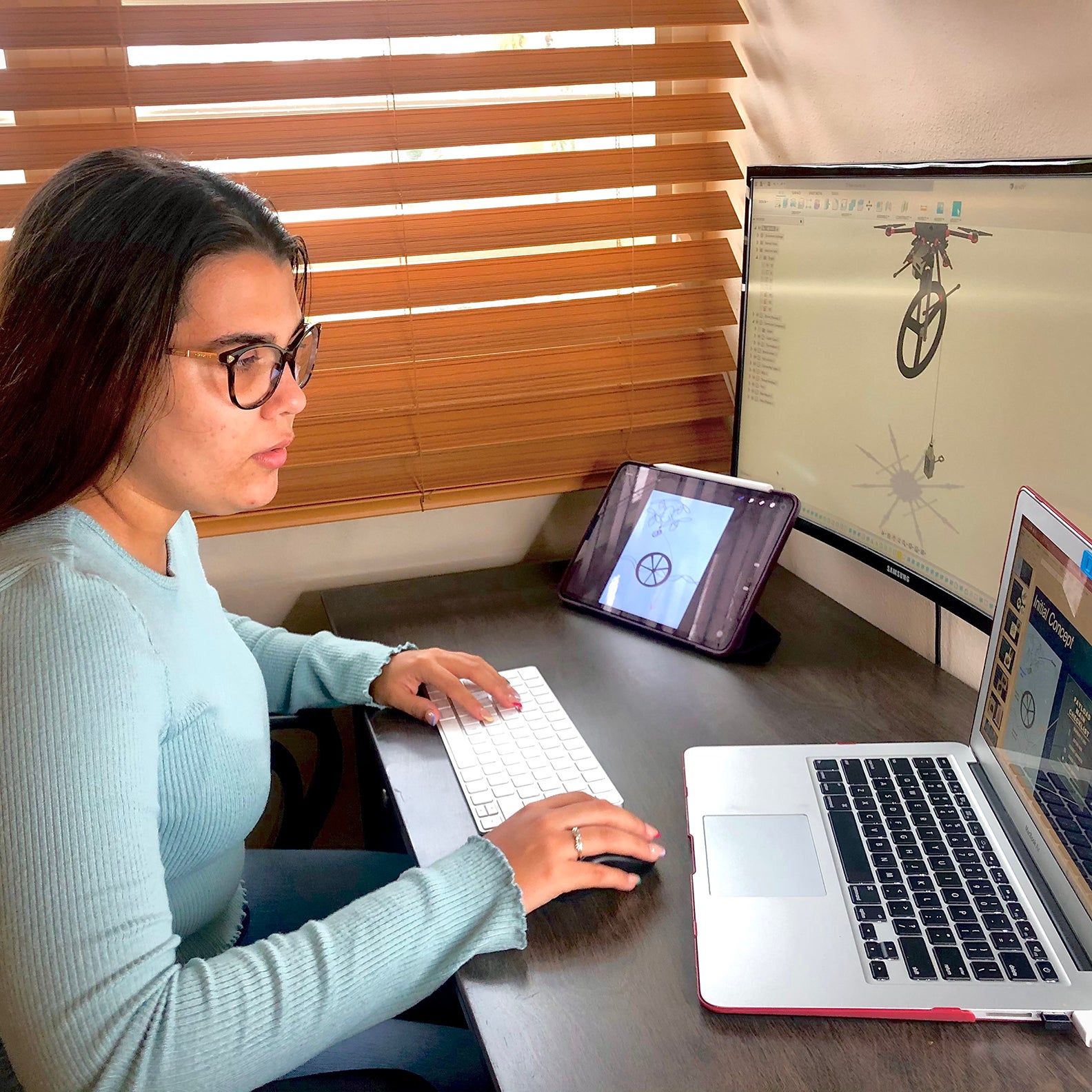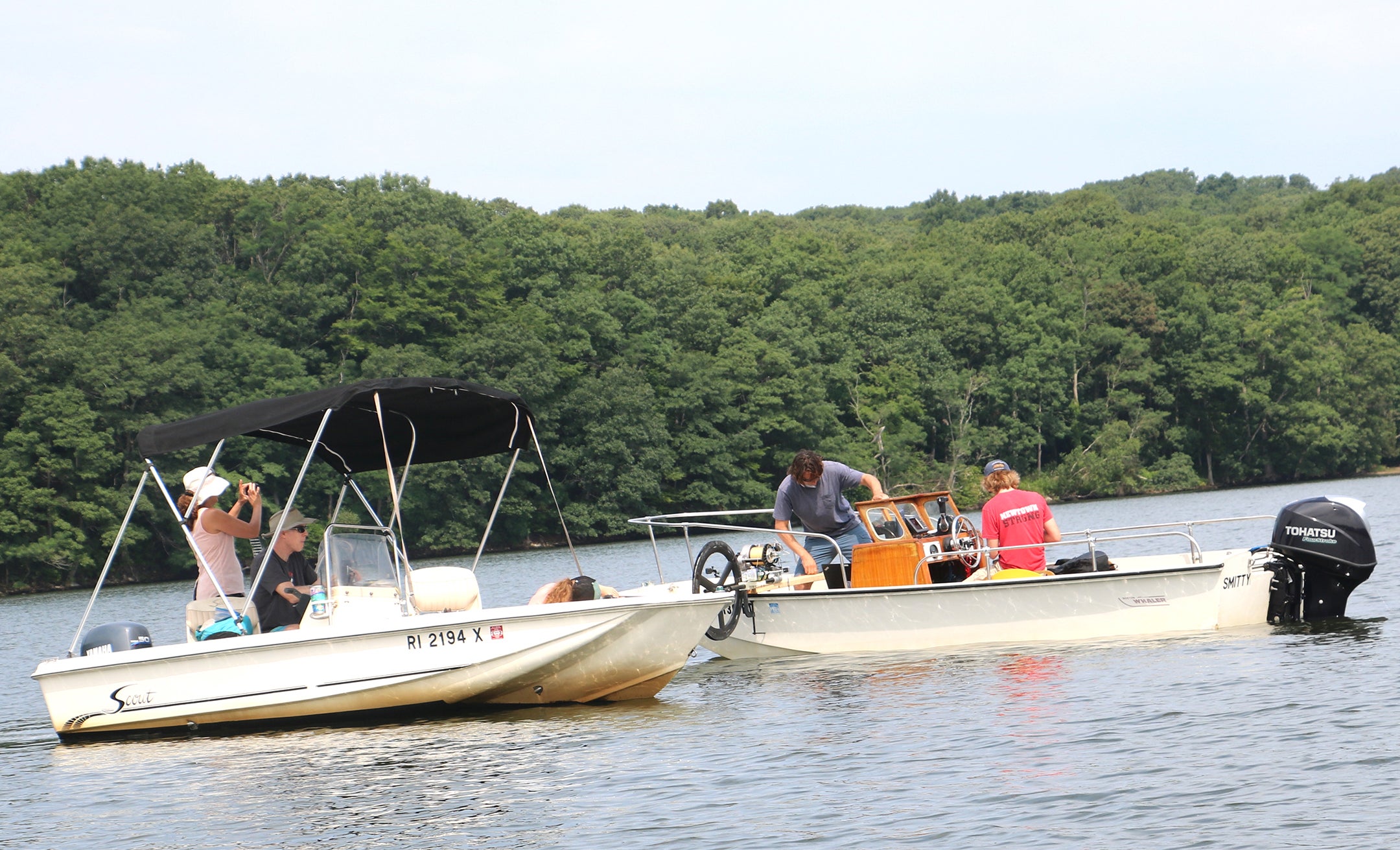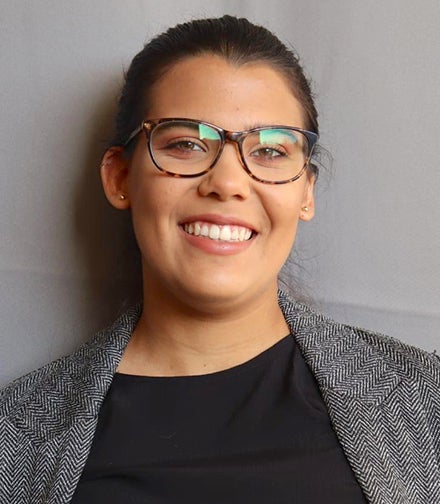KINGSTON, R.I. – May 14, 2021 – If there’s a positive outcome from remote learning during the last year, it’s that students and professors have become adept at sharing information and collaborating on projects while physically apart.
Using several forms of communication, Adriana Muñoz-Soto is completing a yearlong internship with University of Rhode Island Assistant Professor Brennan Phillips while attending school at the University of Puerto Rico-Mayagüez.
Muñoz-Soto was one of the three students, along with URI ocean engineering students Nicholas Chaloux and Russell Shomberg, to assist Phillips in developing the fiber optic reel system, which is the smallest deep-sea system in the world that can provide a livestream video feed.
“After reading about the project, I was immediately interested in the opportunity since it was aligned with the field I’m pursuing,” said Muñoz-Soto, who was finishing her third year of a bachelor’s degree in mechanical engineering when she accepted the internship in 2020.
Making the Connection
Muñoz-Soto connected with Phillips through the National Oceanic Atmospheric Administration (NOAA) Educational Partnership Program for Minority Serving Institutions program, which provides two years of funding and two summer internships with NOAA to rising juniors who are majoring in a science, technology, engineering and mathematics (STEM) field and attending a Minority Serving Institution, as defined by the U.S. Department of Education.

Catalina Martinez served as Muñoz-Soto’s NOAA mentor. She helped facilitate the connection between the student and the professor.
“When I learned of Adriana’s interests, I reached out to Brennan to see if he had a project she could work on for a 10-week summer internship last year,” said Martinez, a URI alumna who has managed a NOAA Ocean Exploration office at URI since 2004. “They created an incredibly effective way to work remotely together. Through the success of the collaboration, we were able to keep the relationship going throughout the school year and now into the summer of 2021.”
Using Technology to Communicate
Phillips and Muñoz-Soto communicated mainly through email, video conferencing and Slack, which is a software platform used for project management.
“When starting a new design, video conferencing was preferred for me to fully grasp the details and purpose of the piece,” Muñoz-Soto said. “As the design progressed, email and Slack were used for commentary, photo updates, changes that needed to be made, advice and any questions I had. I also had weekly video meetings with Dr. Phillips and Catalina for progress reports, mentorship and professional development.”
Phillips was very pleased with the level of communication between the two of them.

“Starting last June, Adriana and I iterated on design concepts for the fishing reel system, specifically the underwater ‘payload,’” said Phillips. “I would draw on a whiteboard in front of a camera, she would take notes and ask questions over Zoom, and then she would send me designs for me to review. Once they were finalized, I 3D-printed them here at URI. In some cases, Adriana operated the printers remotely from Puerto Rico, which was pretty cool.”
Toward the end of the summer in 2020, Phillips and Martinez used Zoom to enable Muñoz-Soto to watch a field test of the fiber optic reel system in the Narrow River. Phillips propped his cell phone up on the bow of his boat in his shoe, while Martinez live streamed the test using her cell phone from a second boat.
Continuing In-Person
After working with Phillips remotely for almost a full year, Muñoz-Soto will finally get to work with the professor in person this summer.
“We’re so happy that Adriana can actually come this summer for an in-person internship session at URI,” Phillips said. “She’ll arrive on June 1 and join my lab for a field expedition to Bermuda in early July. She’ll continue to work on the fiber optic reel system, help run it herself, and get some valuable experience along the way.”
Muñoz-Soto is looking forward to physically working with the equipment that she helped design remotely.
“I’ll continue to focus on the mechanical design of the project while field testing the different prototypes we designed throughout the school year,” said Muñoz-Soto. “We’ll determine if any modifications are needed or if we may continue to the next phase of design, since the final goal is for a payload to be deployed by an aerial drone with no need for vessel or human interaction.”
Goals for the Future
Muñoz-Soto expects to earn her bachelor’s degree in mechanical engineering from the University of Puerto Rico in May or December of 2022. After that, she would like to attend graduate school.
“I am interested in pursuing a master’s degree in product design/innovation, where I can combine my interests of engineering, design and entrepreneurship and see where that path takes me in my career,” said Muñoz-Soto.
Muñoz-Soto hasn’t decided where she would like to attend graduate school, but said she would consider URI.
“If there is a program related to the specific field I would like to enter, I would be interested,” Muñoz-Soto said.
Phillips is confident that Munoz-Soto has the skills to become a highly successful engineer.
“Adriana is extremely bright, mature and hard-working,” said Phillips. “I have been continually impressed with her ability to learn quickly, grasp new concepts and adapt as we iterate on designs. In terms of mechanical engineering and 3D computer-aided design, some of her designs are very advanced and she often adds a little of her own aesthetic ‘flair’ to the designs.”

